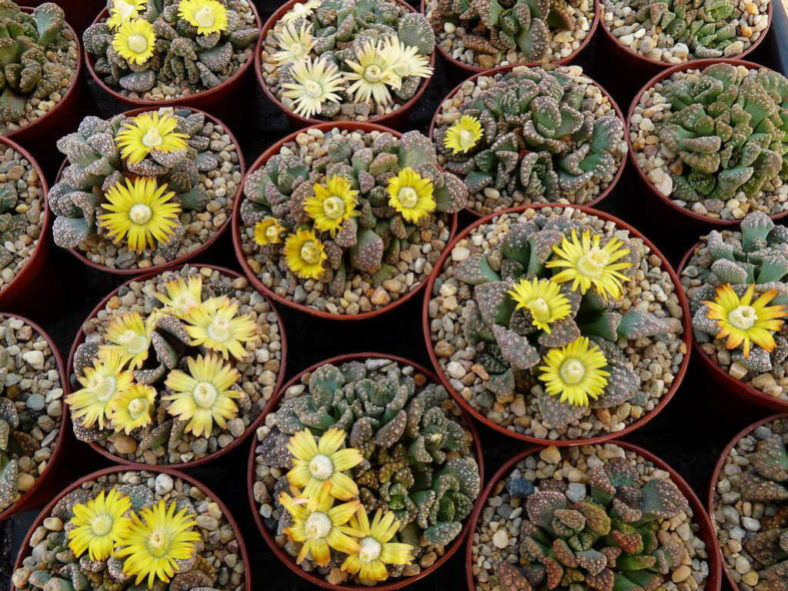Titanopsis is a small genus of about ten species of succulents native to Upper Karoo in South Africa. Because of their formation, they are attractive but quite unusual plants.
The plants grow as dwarf succulents and produce thick truncated leaves with crumpled surfaces. These unusual leaves display all the hues of red, purple, green, cream, and blue throughout the year. Flowers appear in late fall and winter. Like its cousins in the Aizoaceae family, Titanopsis plants produce small daisy-like flowers.
The generic name "Titanopsis" comes from the ancient Greek "titanos," meaning "limestone," and "opsis," meaning "looking like."
Growing Conditions and General Care
The maintenance of these attractive succulents is not difficult. They clump readily, forming a beautiful mat.
Titanopsis plants need moderate water when growing in late fall and early spring. Keep them somewhat dry the rest of the time. They need sandy soil with little organic material.
These succulents are winter growers and should be kept relatively dry in summer. They should also be kept dry when temperatures are below 45 °F (7 °C).

The best place to grow a Titanopsis is a sunny spot with bright sunlight in summer and direct exposure to the sun in winter. The most popular species include: Titanopsis calcarea, Titanopsis fulleri and Titanopsis primosii.
Propagation
In some cases, division of larger clumps is possible, but as most species have tuberous rootstocks and offset slowly, seed production is the most common propagation method. Sow the seeds in spring. The plants should start flowering after two years.
Links
- Back to genus Titanopsis
- Succupedia: Browse succulents by Scientific Name, Common Name, Genus, Family, USDA Hardiness Zone, Origin, or cacti by Genus